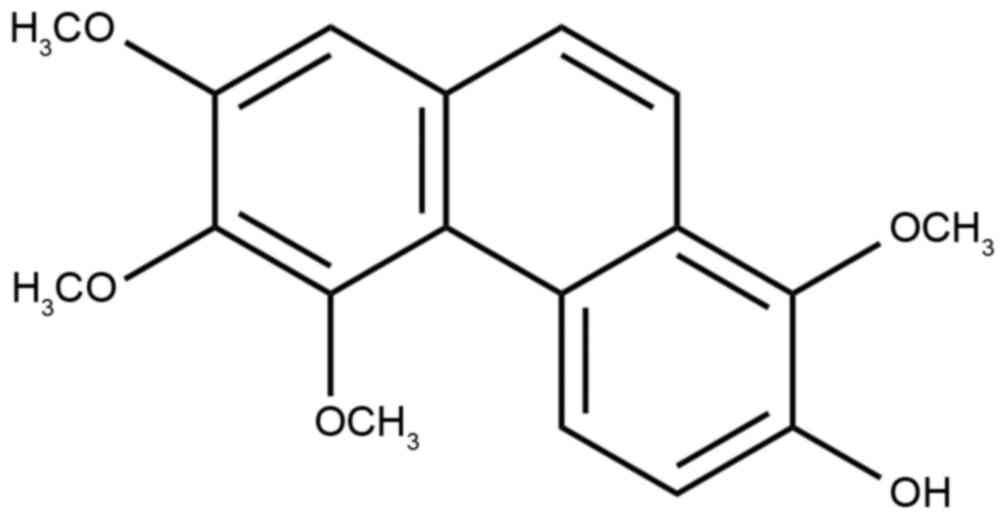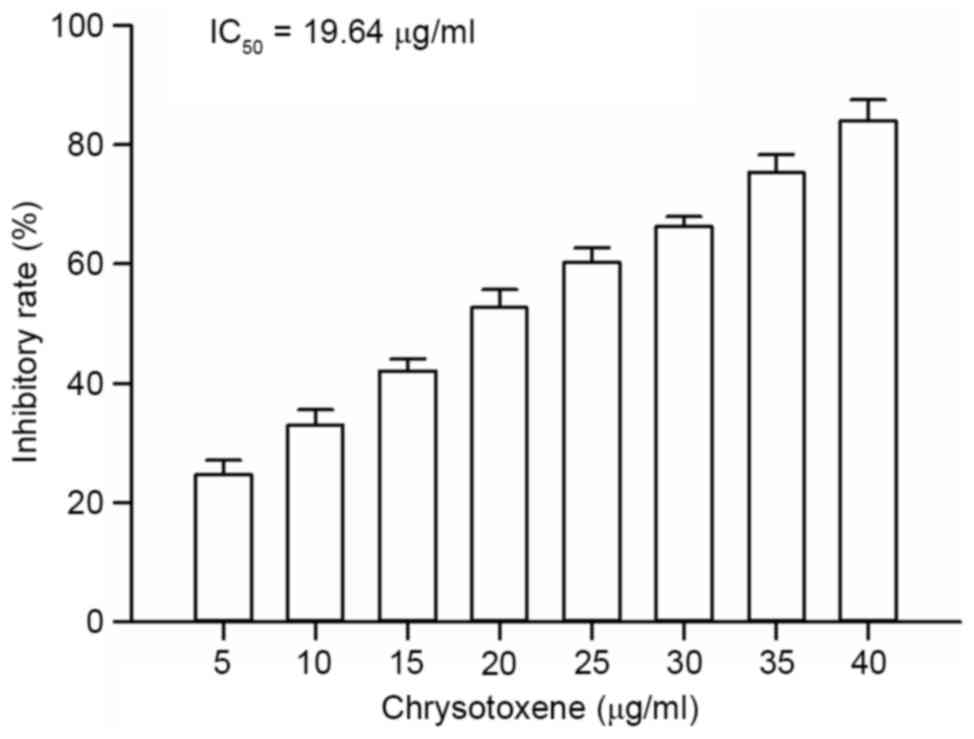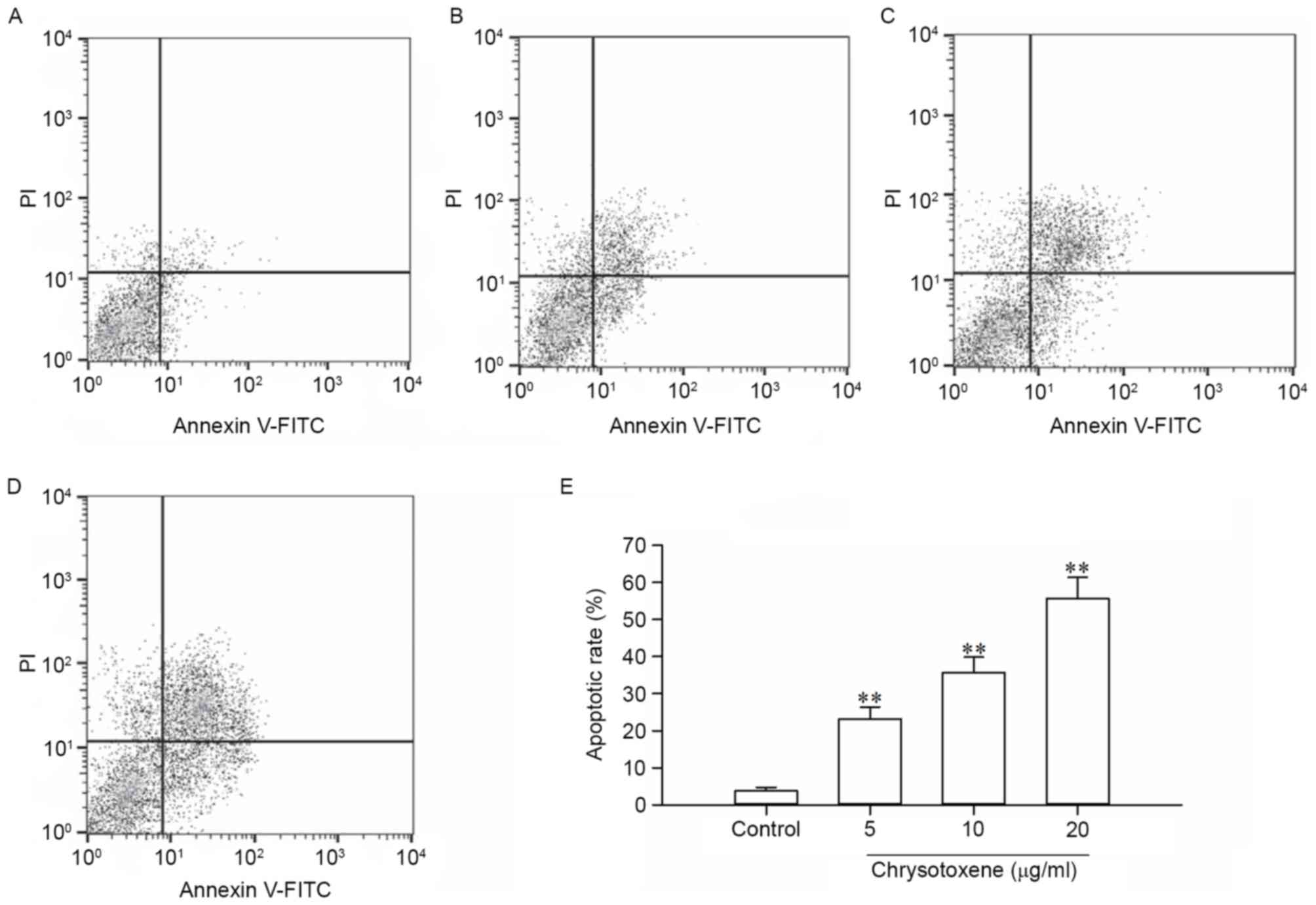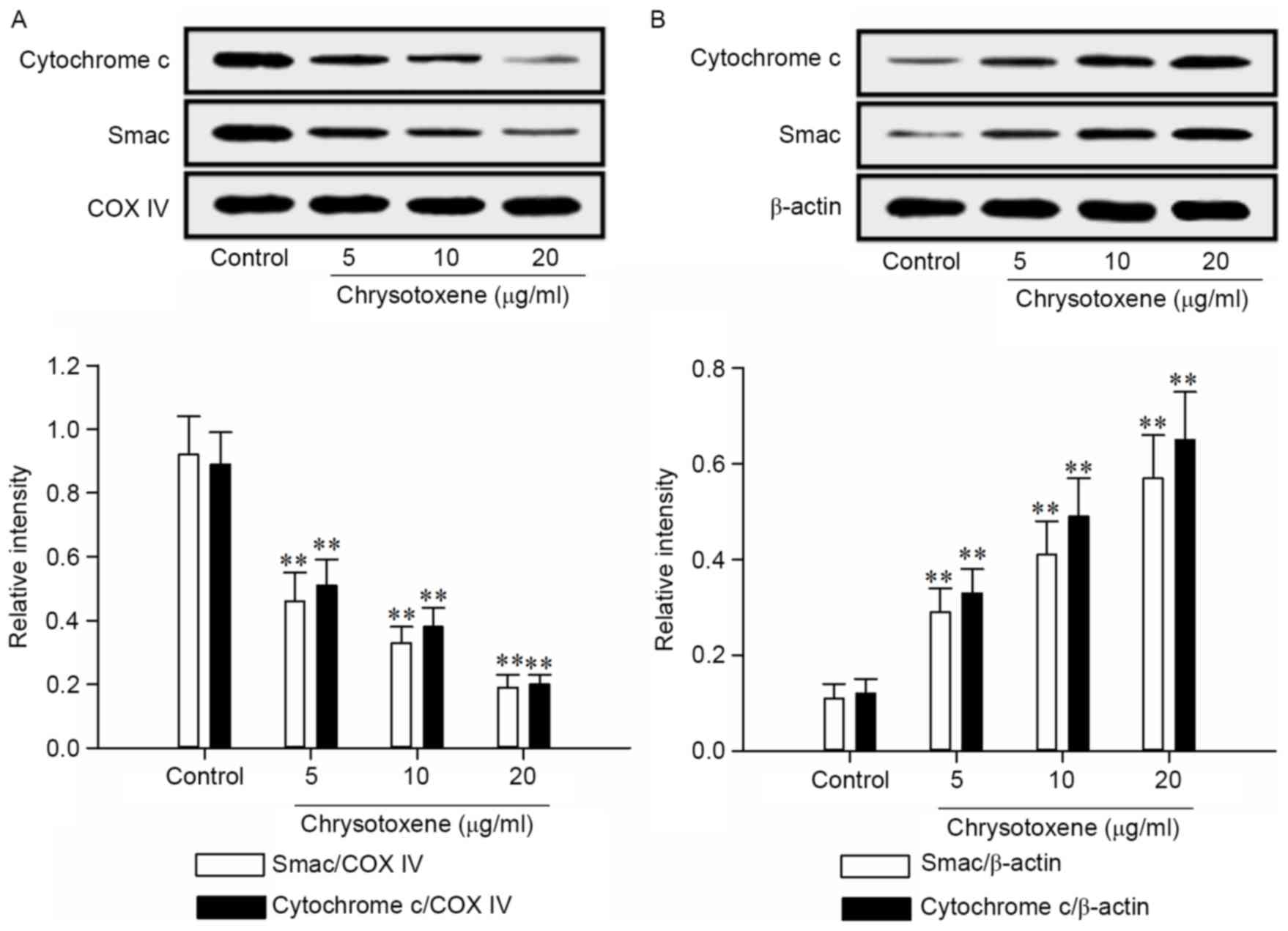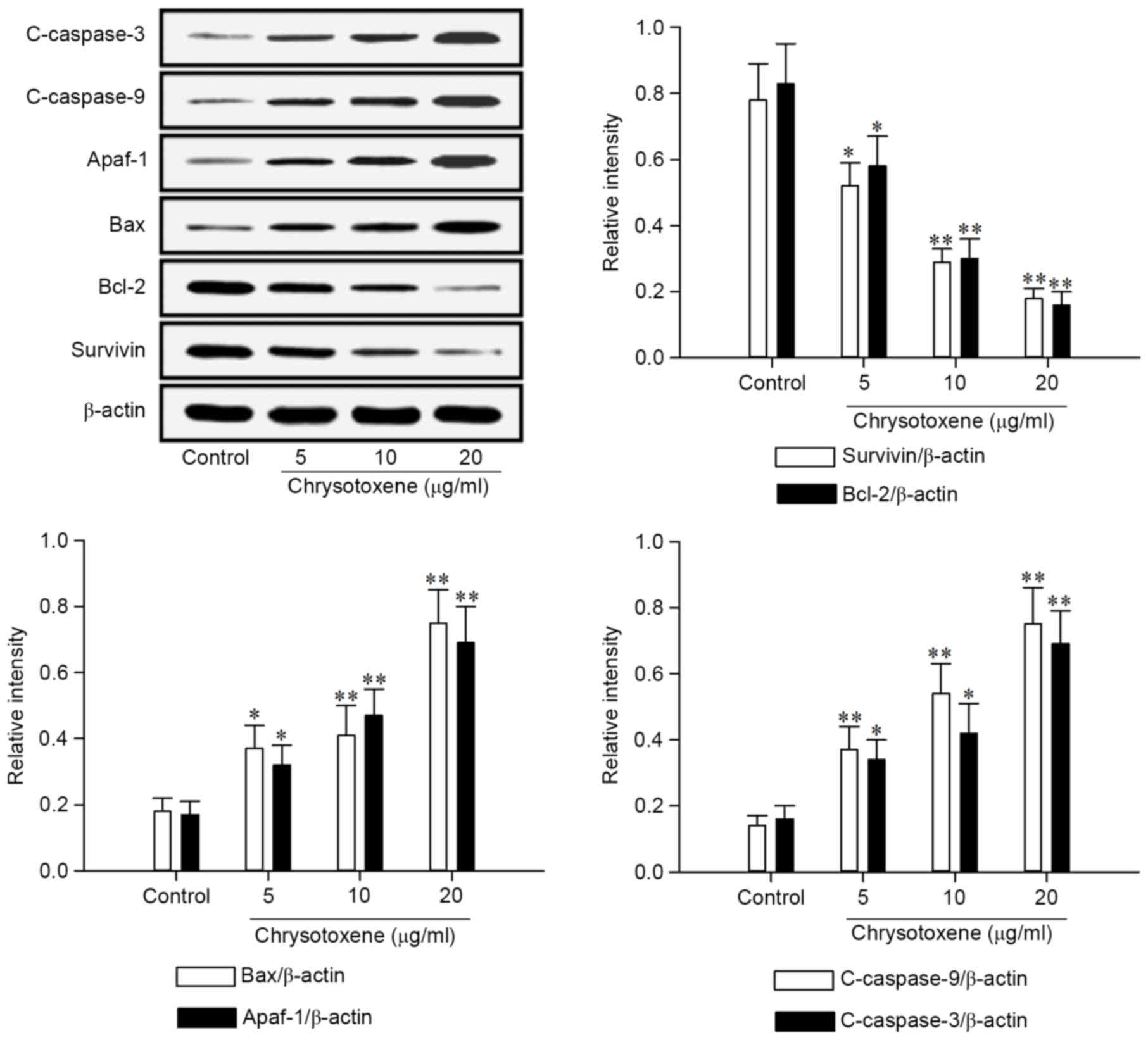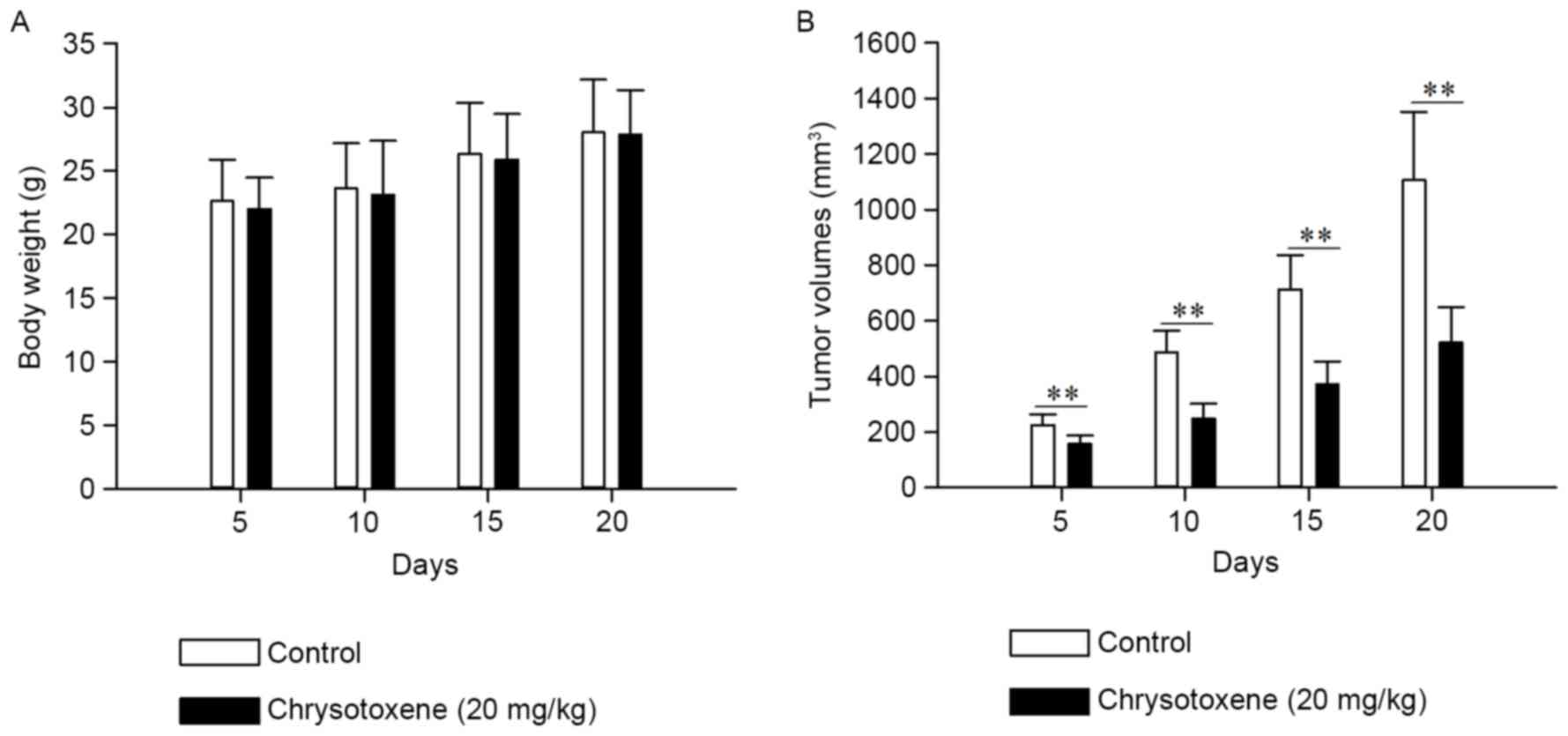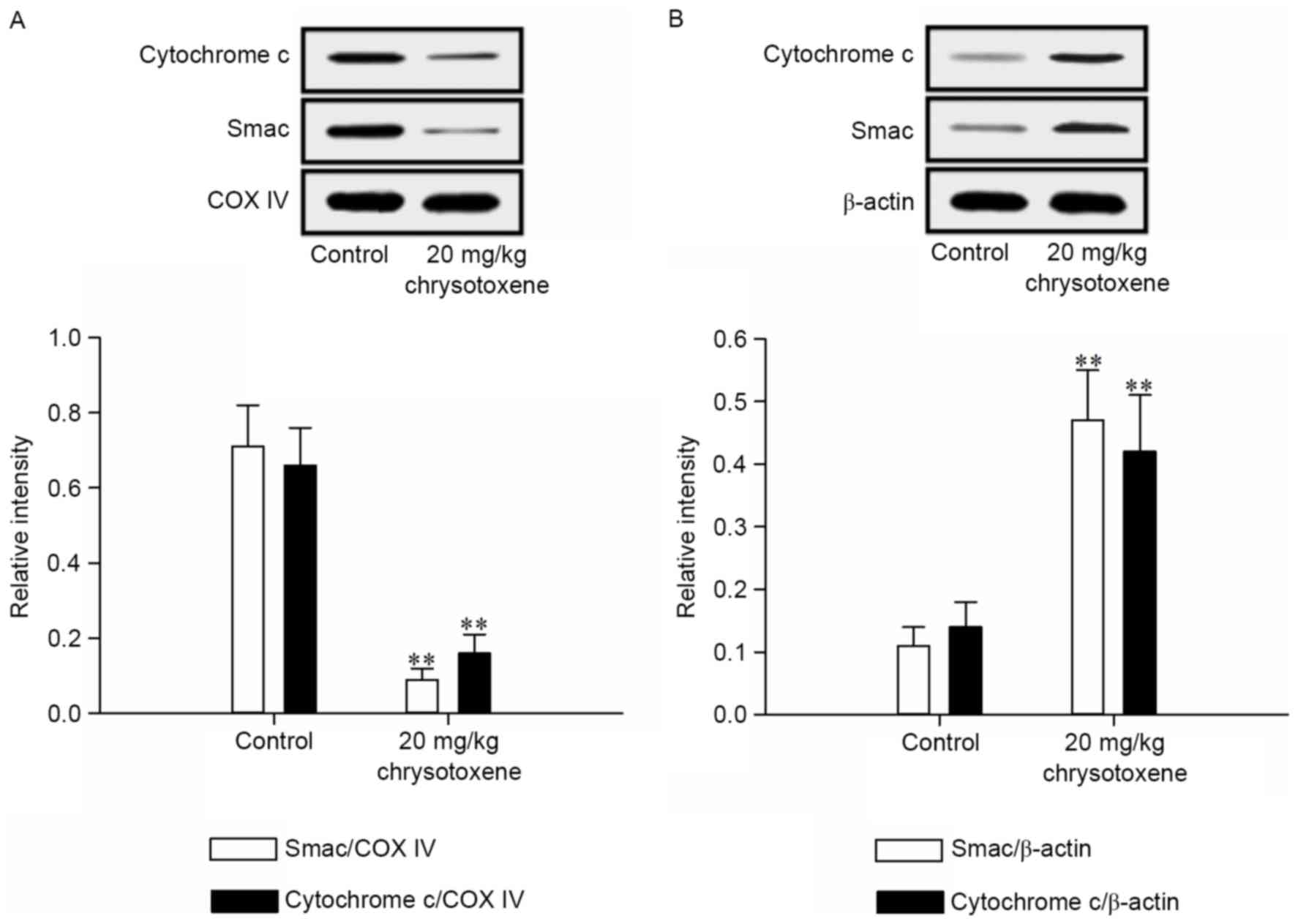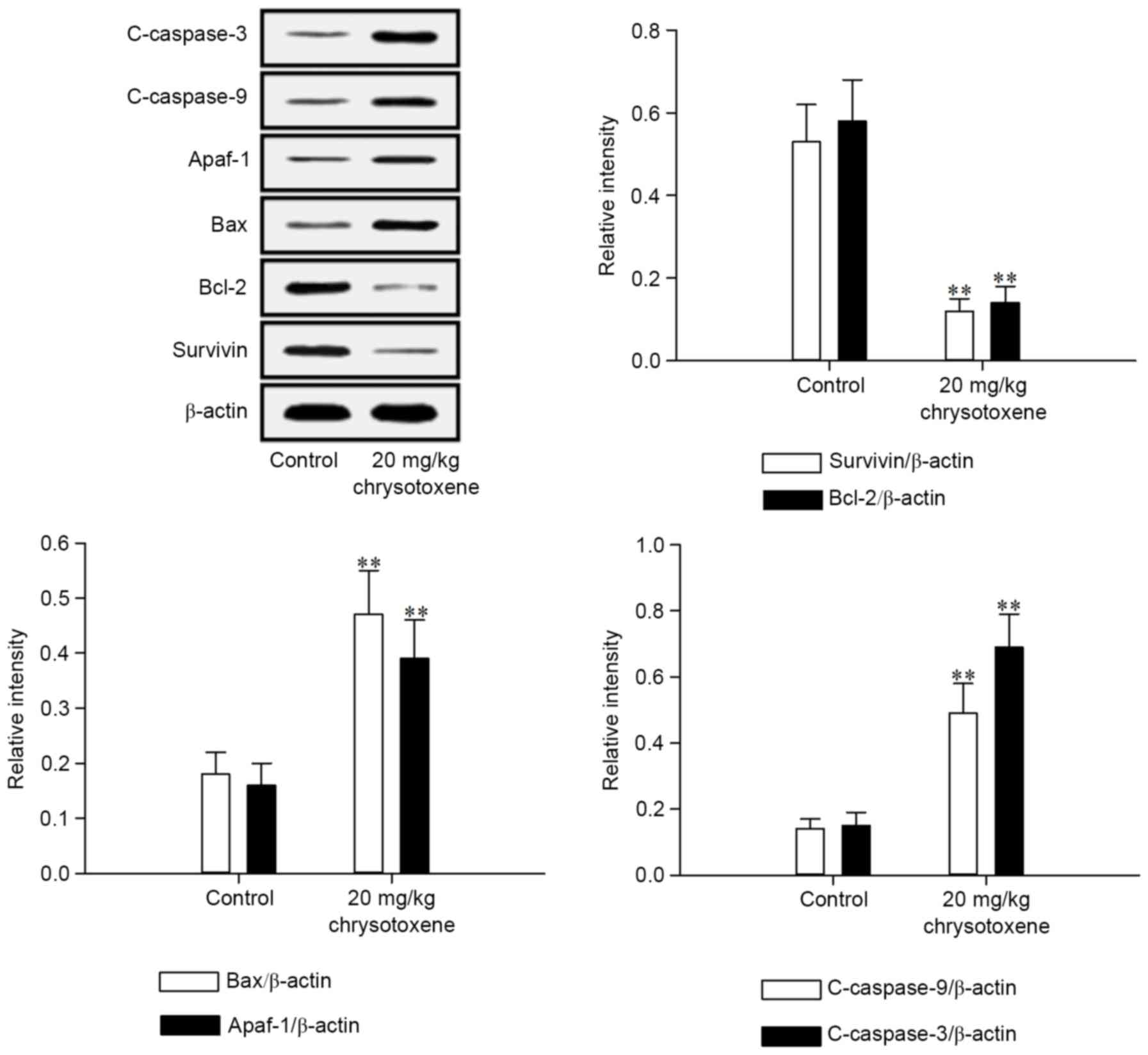|
1
|
Sharma D, Subbarao G and Saxena R:
Hepatoblastoma. Semin Diagn Pathol. 34:192–200. 2017. View Article : Google Scholar : PubMed/NCBI
|
|
2
|
Reyes JD, Carr B, Dvorchik I, Kocoshis S,
Jaffe R, Gerber D, Mazariegos GV, Bueno J and Selby R: Liver
transplantation and chemotherapy for hepatoblastoma and
hepatocellular cancer in childhood and adolescence. J Pediatr.
136:795–804. 2000. View Article : Google Scholar : PubMed/NCBI
|
|
3
|
Yu L, Hu Y, Duan JH and Yang XD: A novel
approach of targeted immunotherapy against adenocarcinoma cells
with nanoparticles modified by CD16 and MUC1 aptamers. J Nanomater.
2015:3169682015. View Article : Google Scholar
|
|
4
|
McAllister SD, Soroceanu L and Desprez PY:
The antitumor activity of plant-derived non-psychoactive
cannabinoids. J Neuroimmune Pharmacol. 10:255–267. 2015. View Article : Google Scholar : PubMed/NCBI
|
|
5
|
Ma GX, Xu GJ and Xu LS: Inhibitory effects
of Dendrobium chrysotoxum and its constituents on the mouse HePA
and ESC. J Chin Pharmaceut Univ. 25:188–189. 1994.
|
|
6
|
Wang TS, Lu YM, Ma GX, Pan Y, Xu GJ, Xu LS
and Wang ZT: In vitro inhibition activities of leukemia K562 cells
growth by constituents from D. chrysotoxum. Nat Prod Res Dev.
9:1–3. 1997.
|
|
7
|
The National Research Council of The
National Academy of Sciences: Guide for the care and use of
aboratory animals. Eight. Washington, DC: The National Academies
Press; 2010
|
|
8
|
Zheng Z, Qiao Z, Gong R, Wang Y, Zhang Y,
Ma Y, Zhang L, Lu Y, Jiang B, Li G, et al: Uvangoletin induces
mitochondria-mediated apoptosis in HL-60 cells in vitro and in vivo
without adverse reactions of myelosuppression, leucopenia and
gastrointestinal tract disturbances. Oncol Rep. 35:1213–1221. 2016.
View Article : Google Scholar : PubMed/NCBI
|
|
9
|
Ma GX, Xu GJ, Xu LS, Wang ZT and Kichuchi
T: Studies on chemical constituents of Dendrobium chrysotoxum
Lindl. Acta Pharm Sin. 29:763–766. 1994.
|
|
10
|
Jiang Y, Zhong M and Peng W: Qualitative
analysis of plant-derived samples by liquid
chromatography-electrospray ionization-quadrupole-time of
flight-mass spectrometry. Trop J Pharm Res. 14:925–930. 2015.
View Article : Google Scholar
|
|
11
|
Xiong S, Zheng Y, Jiang P, Liu R, Liu X
and Chu Y: MicroRNA-7 inhibits the growth of human non-small cell
lung cancer A549 cells through targeting BCL-2. Int J Biol Sci.
7:805–814. 2011. View Article : Google Scholar : PubMed/NCBI
|
|
12
|
Upreti D, Pathak A and Kung SK:
Development of a standardized flow cytometric method to conduct
longitudinal analyses of intracellular CD3ζ expression in patients
with head and neck cancer. Oncol Lett. 11:2199–2206. 2016.
View Article : Google Scholar : PubMed/NCBI
|
|
13
|
Safarzadeh E, Sandoghchian Shotorbani S
and Baradaran B: Herbal medicine as inducers of apoptosis in cancer
treatment. Adv Pharm Bull. 4 Suppl 1:S421–S427. 2014.
|
|
14
|
Li-Weber M: Targeting apoptosis pathways
in cancer by Chinese medicine. Cancer Lett. 332:304–312. 2013.
View Article : Google Scholar : PubMed/NCBI
|
|
15
|
Shi YG: A structure view of
mitochondria-mediated apoptosis. Nat Struct Biol. 8:394–401. 2001.
View Article : Google Scholar : PubMed/NCBI
|
|
16
|
Qin S, Yang C, Wang X, Xu C, Li S, Zhang B
and Ren H: Overexpression of Smac promotes cisplatin-induced
apoptosis by activating caspase-3 and caspase-9 in lung cancer A549
cells. Cancer Biother Radiopharm. 28:177–182. 2013. View Article : Google Scholar : PubMed/NCBI
|
|
17
|
Guo XL, Liang B, Wang XW, Fan FG, Jin J,
Lan R, Yang JH, Wang XC, Jin L and Cao Q: Glycyrrhizic acid
attenuates CCl4-induced hepatocyte apoptosis in rats via a
p53-mediated pathway. World J Gastroenterol. 19:3781–3791. 2013.
View Article : Google Scholar : PubMed/NCBI
|
|
18
|
Renault TT, Teijido O, Antonsson B, Dejean
LM and Manon S: Regulation of Bax mitochondrial localization by
Bcl-2 and Bcl-x L: Keep your friends close but your enemies closer.
Int J Biochem Cell Biol. 45:64–67. 2013. View Article : Google Scholar : PubMed/NCBI
|
|
19
|
Czabotar PE, Lessene G, Strasser A and
Adams JM: Control of apoptosis by the BCL-2 protein family:
implications for physiology and therapy. Nat Rev Mol Cell Biol.
15:49–63. 2014. View
Article : Google Scholar : PubMed/NCBI
|
|
20
|
Yuan S and Akey CW: Apoptosome structure,
assembly and procaspase activation. Structure. 21:501–515. 2013.
View Article : Google Scholar : PubMed/NCBI
|
|
21
|
Würstle ML, Laussmann MA and Rehm M: The
central role of initiator caspase-9 in apoptosis signal
transduction and the regulation of its activation and activity on
the apoptosome. Exp Cell Res. 318:1213–1220. 2012. View Article : Google Scholar : PubMed/NCBI
|
|
22
|
Wang LH, Li HH, Li M, Wang S, Jiang XR, Li
Y, Ping GF, Cao Q, Liu X, Fang WH, et al: SL4, a chalcone-based
compound, induces apoptosis in human cancer cells by activation of
the ROS/MAPK signalling pathway. Cell Prolif. 48:718–728. 2015.
View Article : Google Scholar : PubMed/NCBI
|
|
23
|
Alrieri DC: Targeting survivin in cancer.
Cancer Lett. 332:225–228. 2013. View Article : Google Scholar : PubMed/NCBI
|
|
24
|
Khan N, Bharali DJ, Adhami VM, Siddiqui
IA, Cui H, Shabana SM, Mousa SA and Mukhtar H: Oral administration
of naturally occurring chitosan-based nanoformulated green tea
polyphenol EGCG effectively inhibits prostate cancer cell growth in
a xenograft model. Carcinogenesis. 35:415–423. 2014. View Article : Google Scholar : PubMed/NCBI
|















